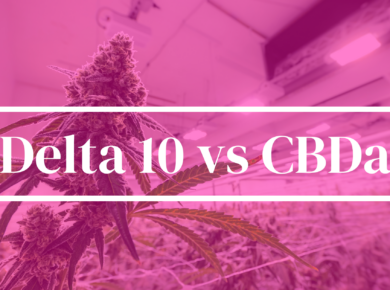Cannabidiol (CBD) and Cannabigerol (CBG) are both prominent cannabinoids originating from the hemp plant. While their molecular foundations might appear similar, they serve distinct roles and yield varying outcomes within the plant.
CBD, taking the spotlight for its prevalence, has undergone comprehensive research. Unlike most cannabinoids, CBD has a unique way of interacting with the human endocannabinoid system – it sways the receptors indirectly rather than binding to them.
In stark contrast, CBG wears the title of the “mother” or “stem cell” cannabinoid. This is due to its foundational role, from which other cannabinoids, including CBD and THC, evolve. Its direct engagement with the CB1 and CB2 brain receptors sets it apart.
It’s evident that both CBD and CBG present potential health advantages. However, their chemical compositions and interactions with our endocannabinoid system diverge in several ways. As always, diving deeper into research will shed more light on these distinctions.
Many States allow hemp derived cannabinoids under the 2018 Farm Bill as long as they contain less than .3% D9 THC. Some States have explicitly banned cannabinoids like Delta 8, so check your local rules and regulations before purchasing.
Here’s the rules for Kush.com and more details
Frequently Asked Questions (FAQs)
- What are CBD and CBG?
CBD and CBG are renowned cannabinoids, naturally occurring in hemp and cannabis. While CBD dominates in terms of presence, CBG is dubbed the “mother” or “stem cell” of cannabinoids, being the precursor for many others, thanks to cannabigerolic acid (CBGA). - How is the extraction of CBD and CBG from hemp done?
Both cannabinoids are sourced from hemp using similar techniques. CO2 extraction stands out as the most favored, utilizing pressurized carbon dioxide to extract the desired compounds from hemp. This approach is both safe and efficient, yielding top-tier CBD and CBG extracts. - How do CBD and CBG differ?
Their primary difference revolves around their abundance in hemp and how they engage with the endocannabinoid system. While CBD is plentiful, CBG is lesser found. Additionally, their interactions with body receptors diverge, possibly leading to varied effects. - Is it possible to use CBD and CBG simultaneously?
Absolutely! Some available products blend these cannabinoids, often labeled as “full-spectrum” or “broad-spectrum.” They’re believed to offer an “entourage effect,” where the combined influence of several cannabinoids surpasses their individual impacts. - Any side effects linked to CBD and CBG?
Like any compound, they might have side effects. Some individuals might experience mild reactions like dry mouth or drowsiness. Nevertheless, both are perceived as safe. It’s wise to begin with minimal doses and adjust based on your comfort.
Medical Disclaimer
The content above is purely educational and shouldn’t replace professional medical counsel. Always consult a healthcare expert before trying any CBD or CBG products.
Where to Buy?
Both CBD and CBG products can be found online and certain brick-and-mortar stores. However, being well-versed with local regulations is crucial before making acquisitions.
Shop
Similar Product Searches You Might Be Interested In:




